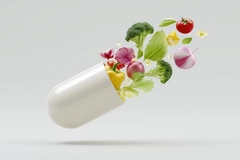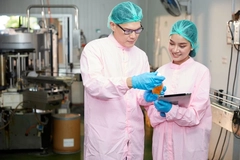World’s largest food aid program cuts child malnutrition in India and boosts income

The world’s largest food assistance program, India’s Public Distribution System (PDS), is bringing transformative impacts on child stunting, boosting household income, and curbing the effects of climate shocks. Nutrition Insight speaks to a co-author of a recent study on the program’s benefits to learn lessons about food transfers and preventing malnutrition.
Research in the American Economic Journal found that India’s National Food Security Act of 2013 prevented almost 1.8 million children from being stunted for over five years.
Kathy Baylis, a co-author and professor at University of California (UC) Santa Barbara, tells us that the main lesson other countries facing food insecurity could learn from India’s approach is that “food transfers can be a successful approach to reducing malnutrition.”
She emphasizes: “Safety nets, in general, can have these long-run effects through safeguarding nutrition, particularly in times of hardship, that have long-run consequences for health and human development.”
PDS works similarly to US food stamps in the past, where those eligible could buy rice or wheat at heavily subsidized rates. It benefits 800 million people and made up 60% of India’s social assistance budget from 2019 through 2020, explain researchers also from the Indian Institute of Management and the University of Calgary.
“Stunting rates for children in India are the same as they are in some of the poorest countries in sub-Saharan Africa, even though it is a lot wealthier. As a result, India’s PDS is the world’s largest food transfer program and India’s most far-reaching social safety net,” Baylis adds.
Lowered stunting and diet diversification
The study found that PDS expansion lowered child stunting from 36% to 28.8%, with the most benefits in children aged zero to two years.
The study found that PDS expansion lowered child stunting from 36% to 28.8%.The authors highlight the program’s importance, with benefits especially noticeable during periods of poor rainfall. PDS also diversified diets, which boosted nutrition and health, and families were able to save money for other options like meat and dairy due to subsidized grains. The finding challenges the notion that subsidized foods lower diverse diets.
Baylis and her team considered whether relying on subsidized grains risks limiting diet diversity in the long run, but they did not find this in the results. “Our results showed that the program increased the consumption of nutrient-dense foods, like animal-sourced foods and lentils.”
“So just because people were receiving rice and wheat didn’t translate to them eating less other foods. That said, a number of states are looking at potentially expanding PDS to other grains, like millet, partly because they want to encourage a more diverse source of staples.”
Though PDS helped reduce stunting, Baylis explains that malnutrition rates are still high “because India was starting at such a high rate of malnutrition that while the expansion of the PDS system helped, it hasn’t fully solved the problem.”
“There is evidence that lack of access to sanitation continues to be a problem and work by my group is showing that increasing hot-humid temperatures in utero are increasing stunting rates. So, there are a lot of factors that keep rates high. That said, there is some evidence that overall rates have been falling — just not as quickly as we might hope.”
Economic benefits
The study also found that PDS had an economic ripple effect, allowing people to work longer hours and earn higher wages.
 PDS had an economic ripple effect, allowing people to work longer hours and earn higher wages.Baylis details that the “sample is all rural — so our results only speak to households in rural areas. We were specifically looking at nutrition for those who are eligible for the program, which is based on having lower incomes compared to those who were ineligible with higher incomes.”
PDS had an economic ripple effect, allowing people to work longer hours and earn higher wages.Baylis details that the “sample is all rural — so our results only speak to households in rural areas. We were specifically looking at nutrition for those who are eligible for the program, which is based on having lower incomes compared to those who were ineligible with higher incomes.”
“Long story short, our study can’t separately identify how the program affected higher-income households or households in urban areas. That said, we were finding substantial effects on increased nutritional quality among eligible (poorer) households.”
The research also challenges the idea that direct cash transfers are better since PDS stabilizes food prices while enabling people to save and reinvest in food budgets.
Baylis says the researchers can’t compare side-by-side with alternative strategies like direct cash transfers, and the PDS program is expensive. “One benefit compared to cash transfer programs is that food transfers generally lower food prices, as opposed to cash transfers, which can increase them. So, particularly in times of poor harvests and increasing food prices, food transfers could be more effective.”
“Social safety nets can have big knock-on effects regarding income, health, and human capital. Even if the safety net itself isn’t huge, it can be beneficial more broadly than we might have expected.”
Nutrition Insight recently looked at India’s plans and efforts to boost nutrition. The government aims to support health under the Saksham Anganwadi and Poshan 2.0 initiatives while tackling rising ultra-processed food rates under its 2025–26 budget.
We also spoke to researchers from India and Nepal about how women’s groups are proving to be important forces in improving nutrition access by gathering collective strength to overcome economic, social, and institutional barriers.
A recent study said intensified sustainable agriculture is the foundation for universal food security and nutrition outcomes. However, its implementation faces challenges despite past Green Revolutions improving the food supply in Asia and sub-Saharan Africa.












